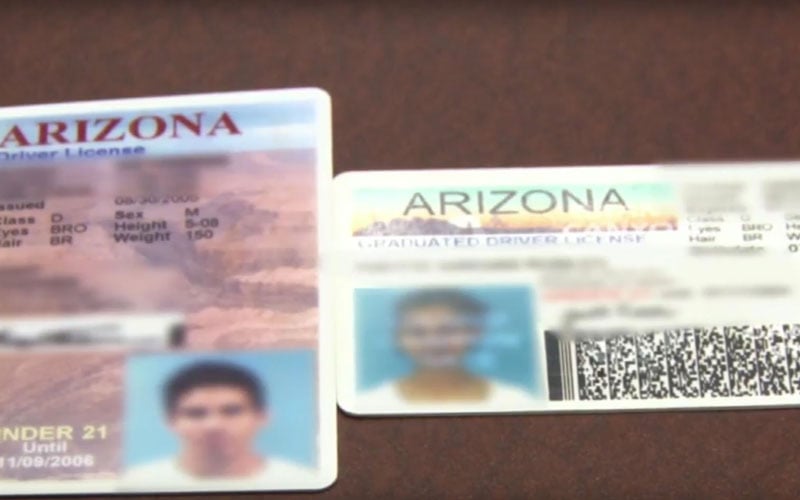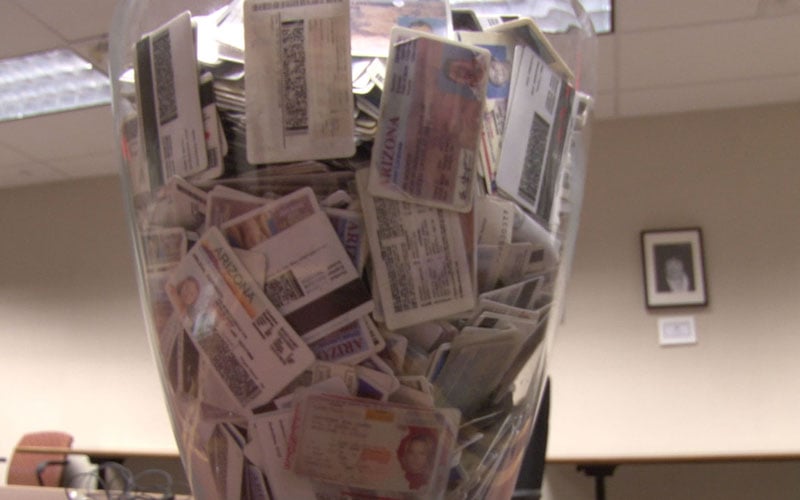Vertical driver’s licenses are now accepted as valid identification in Arizona for out-of-state residents 21 years old and older who want to buy alcohol, ending a nearly 21-month ban and bringing relief to customers and business owners.
The Arizona Department of Liquor License and Control received daily complaints from consumers demanding change, according to Lee Hill, assistant director. And businesses that depend on tourism also were losing money.
Jose Perez, manager of Gringo Star in Tempe, said most of his customers are from out-of-state and the bar lost revenue in the couple of months before the law took effect April 5.
“It was rough. We had a lot of customers just turn around and walk away even though they were just visiting,” Perez said.
Here are four things you need to know about using vertical licenses to purchase liquor at stores and restaurants:
1. Only out-of-state customers can use the vertical IDs
Businesses can accept vertical and horizontal ID cards from out-of-state patrons. But for an Arizona resident, only horizontal IDs work; those with vertical IDs can still be denied purchase. (Vertical licenses in Arizona are issued to minors).
2. Once an Arizona resident turns 21, a key deadline looms
An Arizona resident who turns 21 and has a vertical ID has 30 days to use it to buy alcohol. But once those 30 days are over, the law requires businesses to reject the vertical license. Note: get a horizontal license soon after you turn 21.
3. Businesses can still reject an out-of-state vertical ID
Merchants face a $2,500 if they sell liquor to minors, so they tend to be cautious. The state liquor department notified licensed liquor establishment about the new law. But some licensed vendors may still be unaware and deny service to out-of-state license holders.
4. Fake IDs in any configuration still violate the law
The liquor license department has a bowl of confiscated phony IDs in their Phoenix offices. If someone is caught trying to use a fake ID or someone else’s ID card to purchase alcohol the business can, and usually will, confiscate the card. And the user can face a $2,500 fine.


